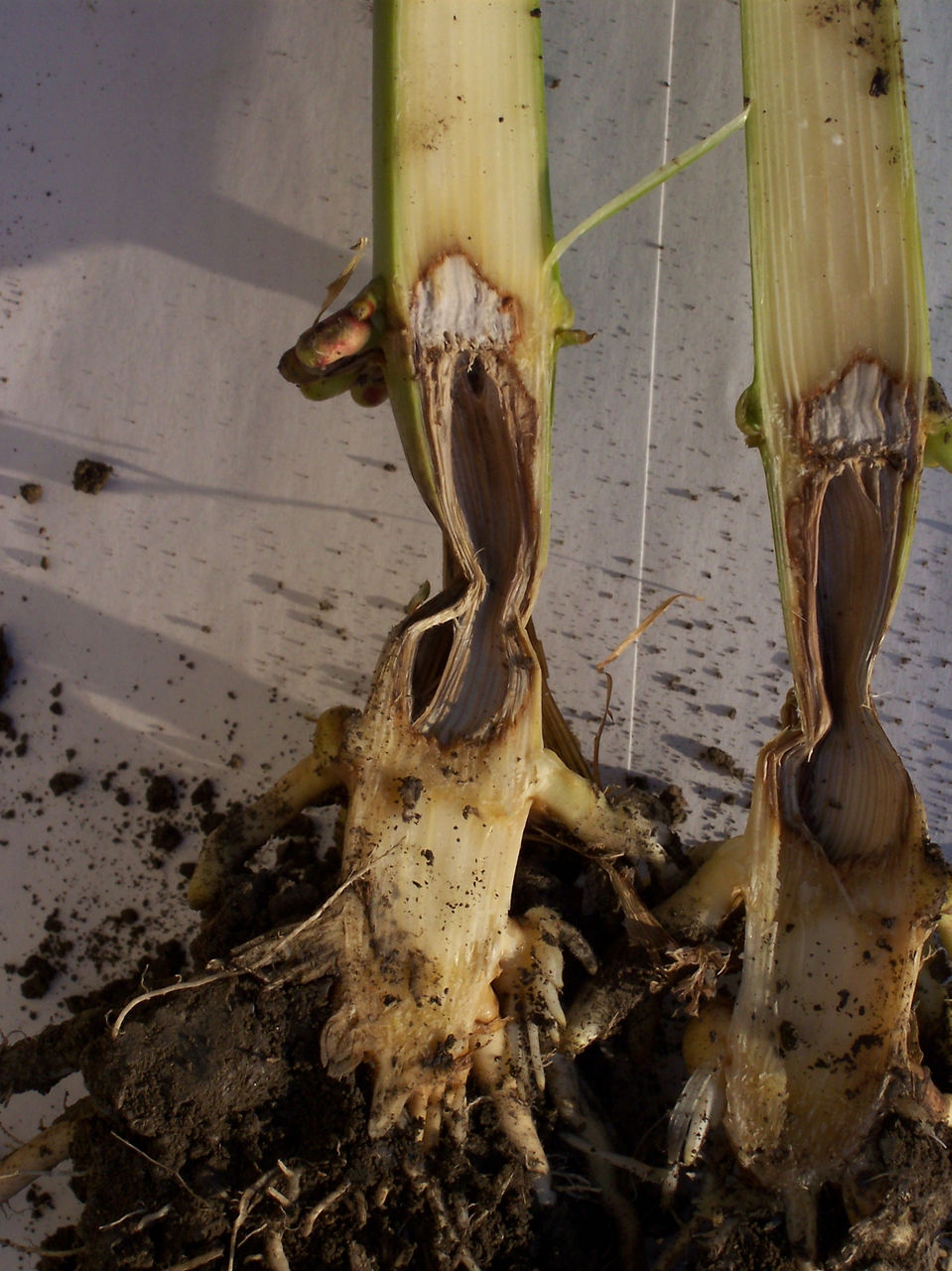Characteristics and Management for Pythium Root Rot in Corn
June 1, 2023
Pythium root rot in corn is a fungal disease that can affect yield potential. There are several Pythium species that can infect corn roots, leading to stunted growth and reduced yields (Figure 1). Understanding the characteristics of Pythium infections and implementing effective management practices is essential to help minimize crop loss.

Characteristics of Pythium Root Rot:
Pythium root rot affects corn crops in the early stages of growth, causing a range of symptoms. Initially, the affected plants appear stunted, with yellowed leaves, and reduced growth. The roots of the infected plants become discolored, with reddish-brown lesions developing on the root surface. As the disease progresses, the roots become slimy and start to rot, leading to plant death. Pythium root rot typically occurs in poorly drained or compacted soils with high moisture content, which creates a favorable environment for fungal growth.1,2
Although most Pythium species are associated with cool to cold soil temperatures, other species are associated with higher soil temperatures. As an example, P. aphanidermatum is associated with temperatures above 77 °F and can result in stalk rot (Figure 2).3,4

Management
Management practices include:
- Proper Drainage: Pythium pathogens thrive in poorly drained or compacted soils. Therefore, proper drainage is essential to help minimize the impact of this disease. Ensure that the field has proper drainage by installing tile drains, creating contour strips, or planting cover crops.
- Seed Treatment: Treating corn seeds with fungicides is another effective management practice.
- Check soil temperatures, soil moisture content, and weather forecasts to help schedule planting dates, especially in no-till or conservation tillage systems. Wet, cold soils provide a favorable environment for disease development.
In conclusion, Pythium root rot is a corn disease that can cause substantial yield losses. However, implementing effective management strategies can help minimize the impact of this disease.
Channel Agronomist
Brandon Beck
Sources:
1Ernest, E.G. 2016. Pythium in corn. Weekly Crop Update. University of Delaware. https://sites.udel.edu/weeklycropupdate/?p=9404/.
2Koehler, A. Pythium root rot in corn. Maryland Agronomy News. University of Maryland. https://blog.umd.edu/agronomynews/2021/05/14/pythium-root-rot-in-corn/.
3Koike, S.T., Tjosvold, S.A., and Mathews, D.M. 2020. Pythium root rot. Agriculture: Floriculture and Ornamental Nurseries Pest Management Guidelines. UC IPM. University of California.
4Pythium stalk rot in corn. 2022. Crop Protection Network. A Product of Land Grant Universities. https://cropprotectionnetwork.org/encyclopedia/pythium-stalk-rot-of-corn/.
Websites verified 4/25/23. 1221_444551